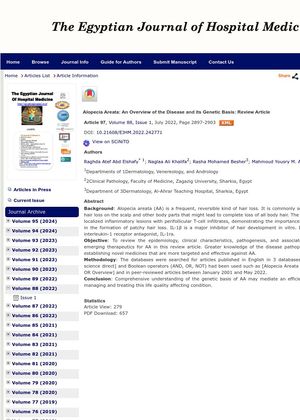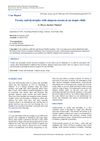Alopecia Areata: An Overview of the Disease and Its Genetic Basis
June 2022
in “
The Egyptian Journal of Hospital Medicine
”

TLDR Understanding the genetics of alopecia areata could lead to better treatments.
Alopecia areata (AA) is a common, reversible type of hair loss characterized by patchy regions of complete hair loss on the scalp and other body parts, potentially leading to total body hair loss. The condition is marked by localized inflammatory lesions with perifollicular T-cell infiltrates, highlighting the role of local cytokine production in patchy hair loss. IL-1β, a major inhibitor of hair growth in vitro, plays a significant role, and its effect is blocked by the interleukin-1 receptor antagonist, IL-1ra. This review article aimed to explore the epidemiology, clinical features, pathogenesis, associated genetic factors, and emerging treatments for AA. The authors concluded that a thorough understanding of AA's genetic basis could lead to more effective, targeted treatments for this condition that significantly impacts quality of life.

